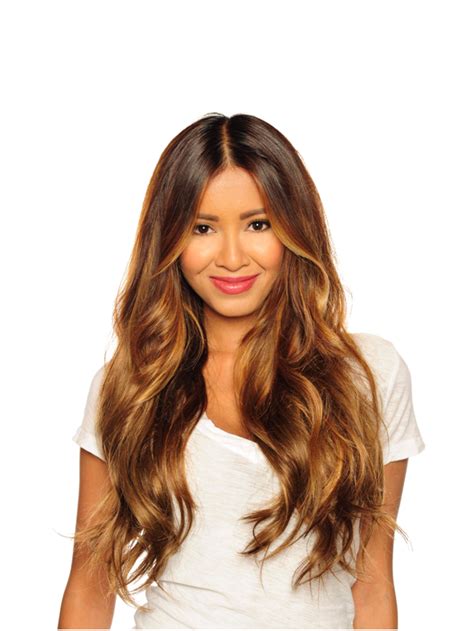Enhancing Your Beauty with Natural Hair Extensions
Hair extensions have become a popular choice for individuals seeking to enhance their natural hair’s length, volume, and texture. Whether you desire lush locks, luscious waves, or vibrant colors, hair extensions offer a versatile solution. In this comprehensive guide, we will delve into the world of hair extensions, exploring their types, applications, and benefits while emphasizing the importance of choosing natural-looking hair extensions.

Types of Hair Extensions
The market offers a diverse range of hair extensions, each with its unique characteristics and advantages. Understanding the different types can help you make an informed decision based on your specific needs.
- Clip-In Extensions: These extensions are easy to attach and remove, making them ideal for temporary hair transformations. They clip directly onto your natural hair, adding volume and length in a matter of minutes.
- Tape-In Extensions: Tape-in extensions are applied by sandwiching your natural hair between two strips of tape. They create a seamless blend and can last for several weeks with proper maintenance.
- Fusion Extensions: Fusion extensions involve bonding individual strands of hair to your natural hair using heat or glue. They are semi-permanent, lasting up to six months, but require professional application and removal.
- Sew-In Extensions: Sew-in extensions are attached to your natural hair by braiding or weaving. This method provides a secure hold and can last for several months, making it a popular choice for long-term hair enhancements.
- Micro Ring Extensions: Micro ring extensions utilize small, metal rings to attach strands of hair to your natural hair. They are less invasive than fusion extensions and can blend seamlessly with your own hair.
- Ponytail Extensions: Ponytail extensions are perfect for adding instant length and volume to your ponytail. They can be attached with a clip or drawstring.
- Synthetic Extensions: Made from artificial fibers, synthetic extensions are an affordable option but may not offer the same natural-looking finish as human hair extensions.
- Human Hair Extensions: Human hair extensions provide the most natural-looking and versatile option. They can be colored, styled, and treated like your own hair.
Choosing Natural-Looking Hair Extensions
When selecting hair extensions, the key to achieving a natural look lies in choosing hair that closely matches your own hair texture and color. Here are some tips to consider:
- Texture: The texture of your natural hair should complement the texture of your extensions. If you have fine hair, opt for extensions with a similar texture to avoid an unnatural appearance.
- Color: The color of your extensions should match or slightly complement your natural hair color. Avoid drastic color changes, as they can be difficult to blend seamlessly.
- Length: The length of your extensions should be in proportion to your natural hair. Excessive length can create an unnatural look and put unnecessary strain on your hair.
- Density: The density of your extensions refers to the thickness of the hair. Choose extensions with a density that matches your natural hair to avoid bulky or thinning areas.
Benefits of Hair Extensions
Hair extensions offer numerous benefits, including:
- Length: Extensions can instantly add length to your hair, giving you the long, luscious locks you’ve always wanted.
- Volume: Extensions can boost your hair’s volume, creating a fuller and more voluminous look.
- Color: Extensions allow you to experiment with new hair colors without committing to a permanent change. They can also add highlights or lowlights to your natural hair.
- Texture: Extensions can transform the texture of your hair, giving you curls, waves, or a sleek, straight look.
- Concealment: Hair extensions can help conceal hair loss or thinning areas, creating a more confident and youthful appearance.
How to Maintain Hair Extensions
Proper maintenance is crucial to ensuring the longevity and natural look of your hair extensions. Here are some tips to keep in mind:
- Wash gently: Use a sulfate-free shampoo and conditioner to avoid drying out your hair extensions.
- Avoid heat styling: Heat can damage hair extensions, so limit the use of heat styling tools or use them on a low setting.
- Brush regularly: Brush your hair extensions regularly with a wide-toothed comb to prevent tangles.
- Protect from the elements: Sunlight can fade hair extensions, while chlorine and salt water can damage them. Protect your extensions by wearing a hat or using a UV spray.
- Sleep with care: Braid or loosely tie your hair extensions before bed to avoid tangles.
Tips and Tricks for Natural-Looking Hair Extensions
Achieving a natural-looking blend between your natural hair and hair extensions requires careful consideration. Here are some tips and tricks:
- Start small: Begin with a small amount of extensions to assess how they look and feel before adding more.
- Layer different lengths: Using extensions of varying lengths can create a more natural-looking volume and texture.
- Blend the roots: Apply a root smudge or toner to the roots of your extensions to match your natural hair color.
- Style your hair: Style your natural hair and extensions together to create a cohesive look.
- Get professional help: If you’re unsure about applying or maintaining hair extensions yourself, consult a professional hairstylist.
Conclusion
Hair extensions offer a versatile and transformative way to enhance the length, volume, and texture of your hair. By choosing natural-looking hair extensions and following proper maintenance techniques, you can achieve a seamless blend and a more confident, beautiful you.
